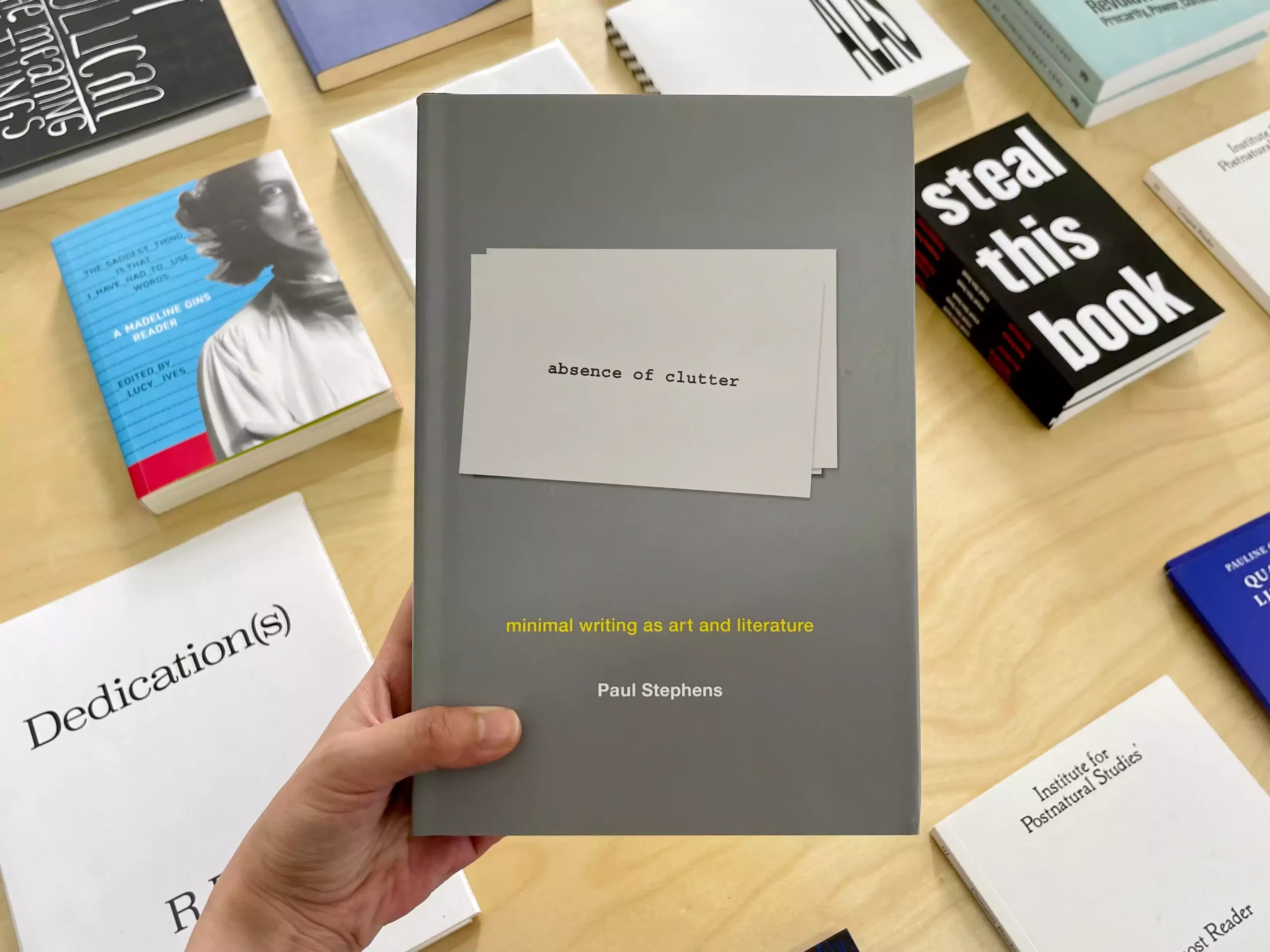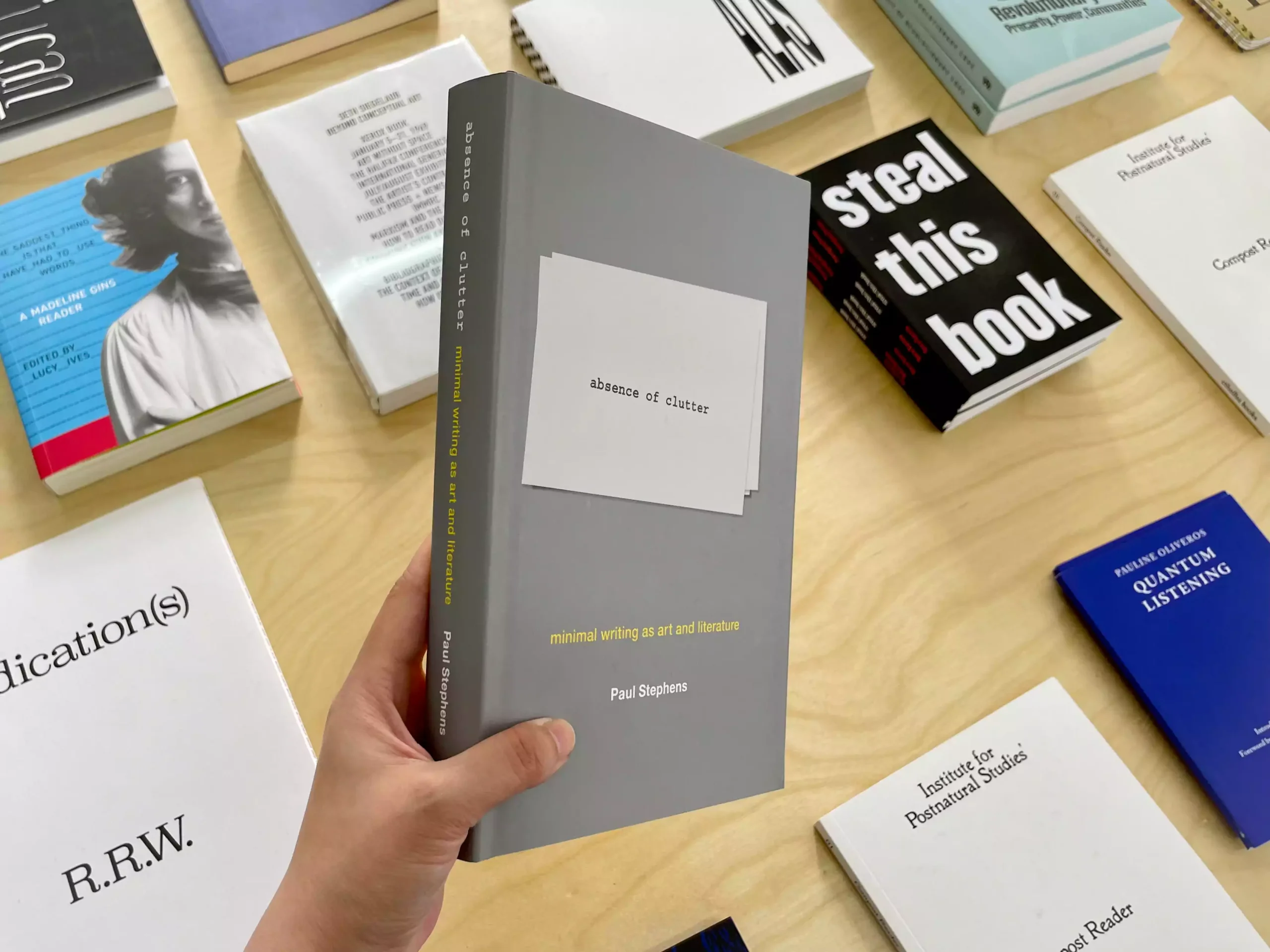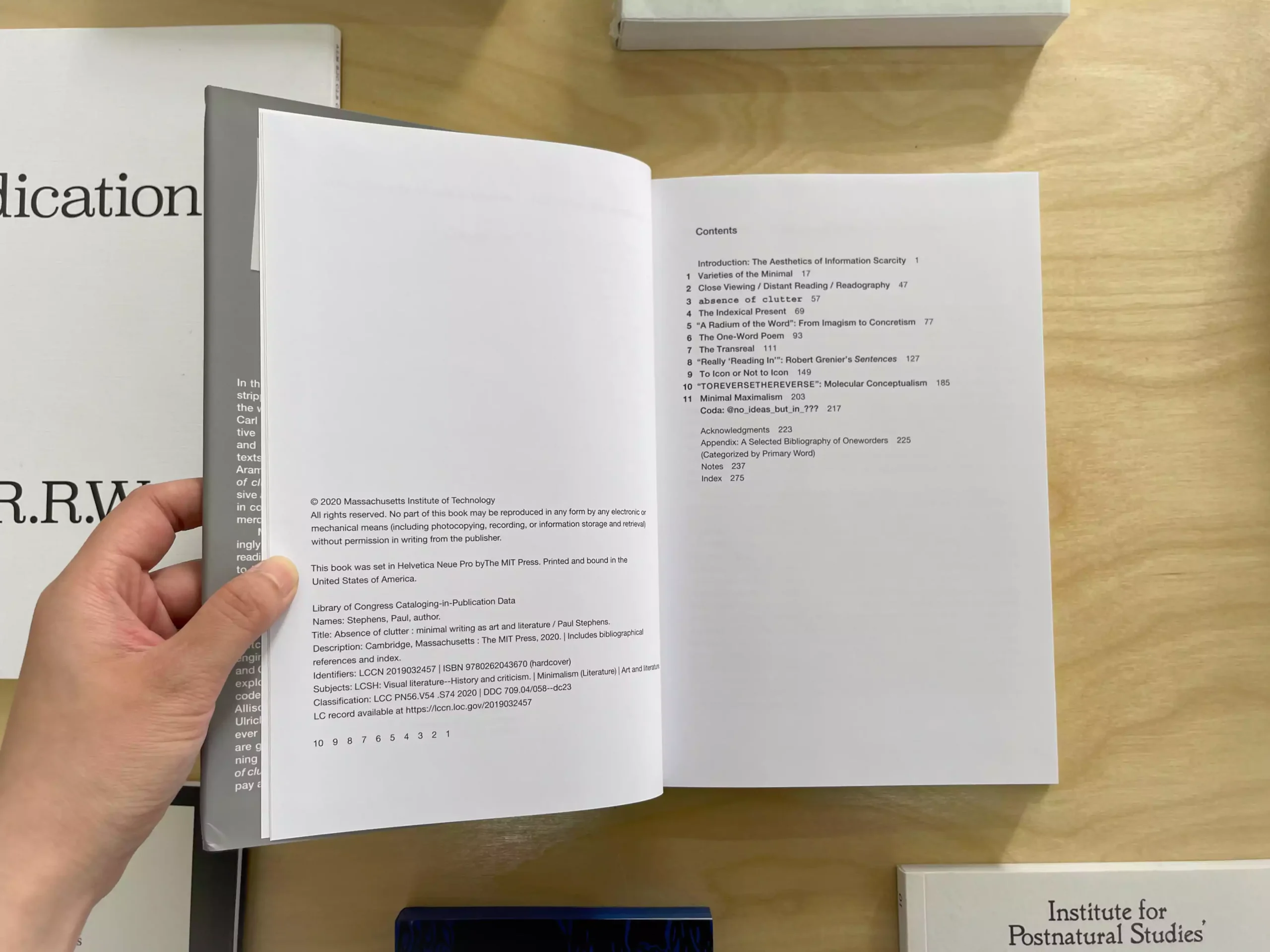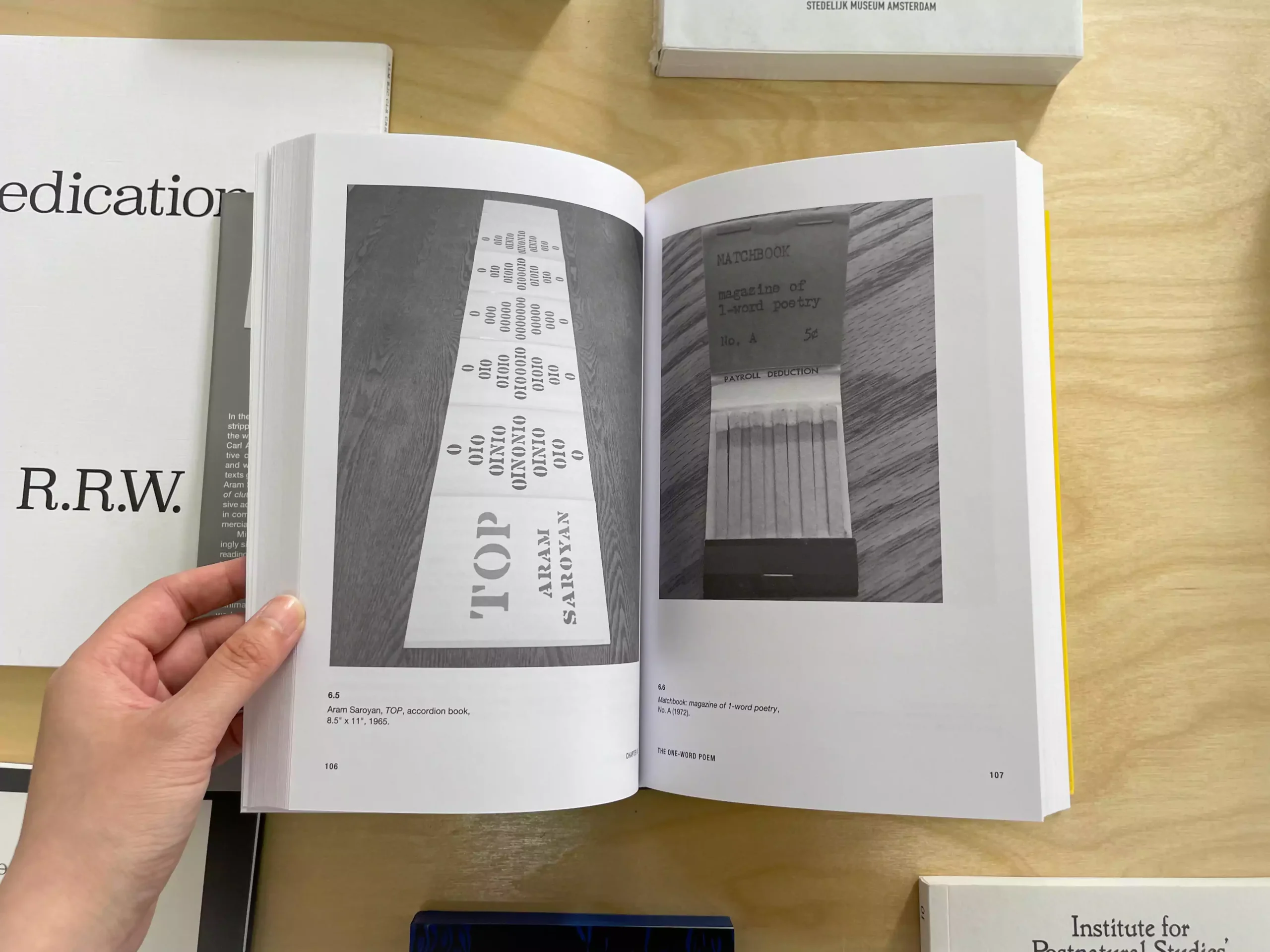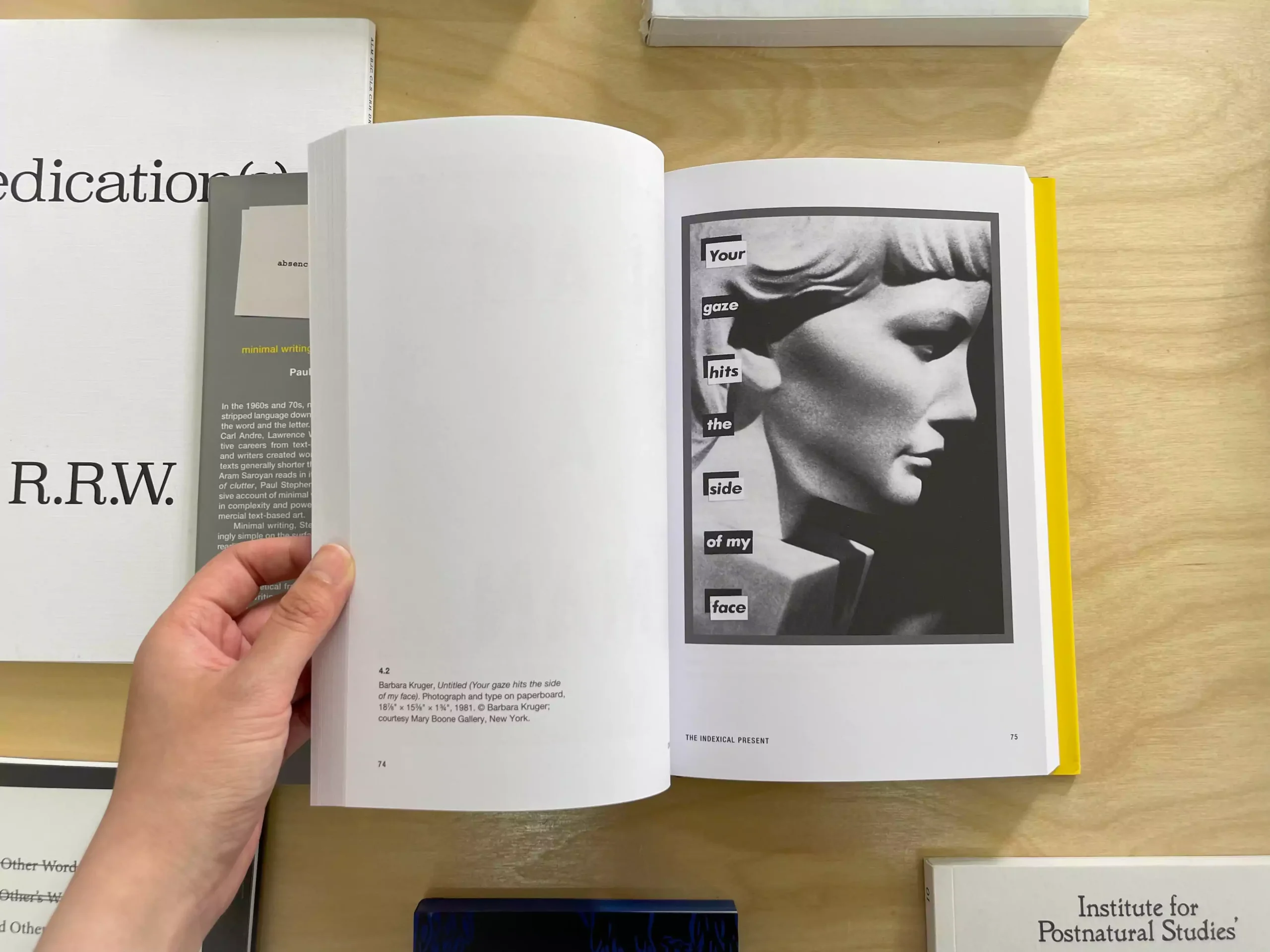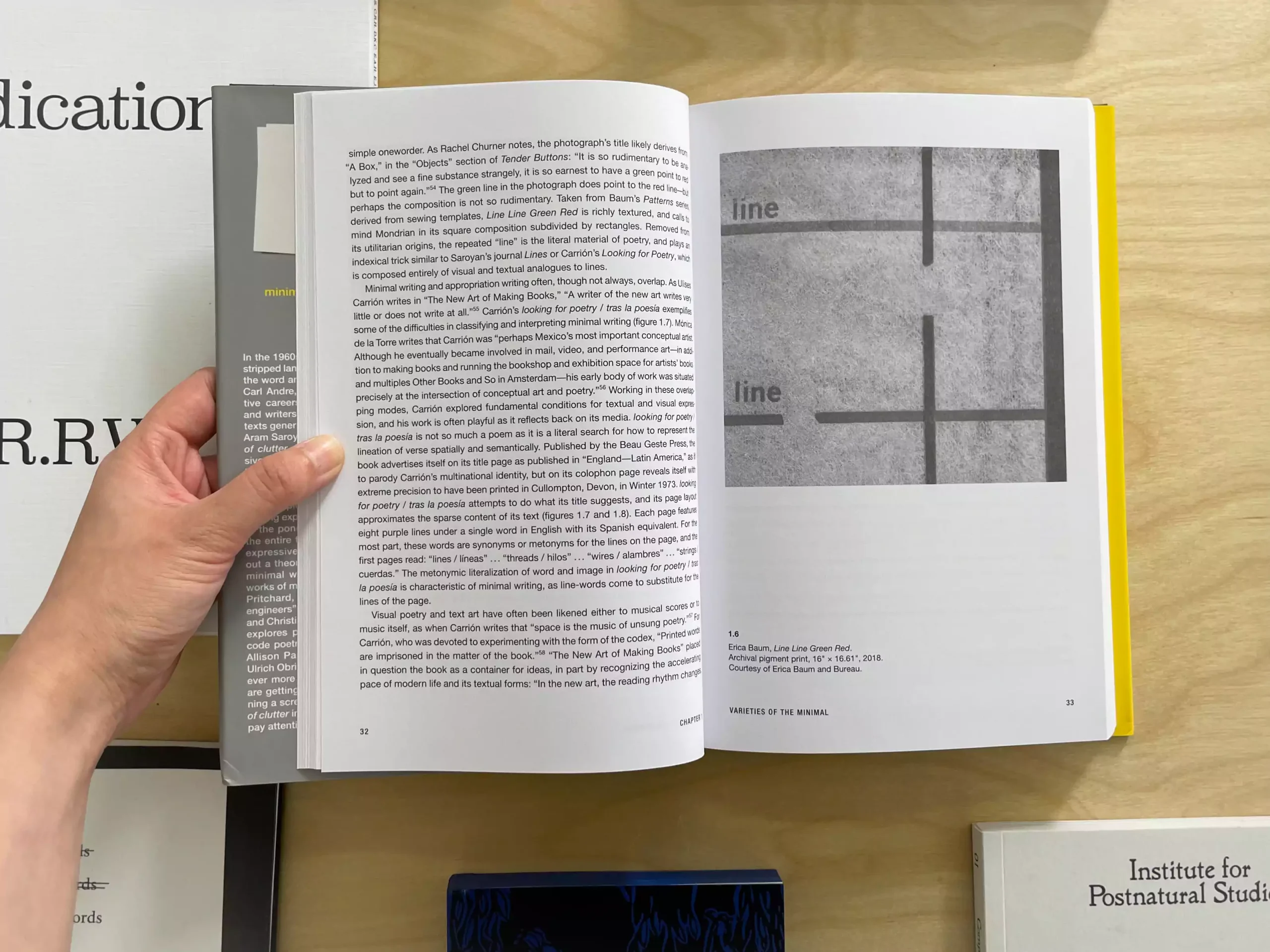minimal writing as art and literature
Absence of Clutter: minimal writing as art and literature
Paul Stephens
An exploration of minimal writing—texts generally shorter than a sentence—as complex, powerful literary and visual works.
In the 1960s and 70s, minimal and conceptual artists stripped language down to its most basic components: the word and the letter. Barbara Kruger, Jenny Holzer, Carl Andre, Lawrence Weiner, and others built lucrative careers from text-based art. Meanwhile, poets and writers created works of minimal writing—visual texts generally shorter than a sentence. (One poem by Aram Saroyan reads in its entirety: eyeye.) In absence of clutter, Paul Stephens offers the first comprehensive account of minimal writing, arguing that it is equal in complexity and power to better-known, more commercial text-based art.
Minimal writing, Stephens writes, can be beguilingly simple on the surface, but can also offer iterative reading experiences on multiple levels, from the fleeting to the ponderous. “absence of clutter,” for example, the entire text of a poem by Robert Grenier, is both expressive and self-descriptive. Stephens first sets out a theoretical framework for reading and viewing minimal writing and then offers close readings of works of minimal writing by Saroyan, Grenier, Norman Pritchard, Natalie Czech, and others. He “reverse engineers” recent works by Jen Bervin, Craig Dworkin, and Christian Bök that draw on molecular biology, and explores print-on-demand books by Holly Melgard, code poetry by Nick Montfort, Twitter-based work by Allison Parrish, and the use of Instagram by Hans-Ulrich Obrist and Saroyan. Text, it seems, is becoming ever more prevalent in visual art; meanwhile, poems are getting shorter. When reading has become scanning a screen and writing tapping out a text, absence of clutter invites us to reflect on how we read, see, and pay attention.
探索极简写作—通常短于一个句子的文字—作为复杂、强大的文学和视觉作品。
在20世纪60年代和70年代,极简和概念艺术家将语言剥离为最基本的组成部分:文字和字母。Barbara Kruger、Jenny Holzer、Carl Andre、Lawrence Weiner等人通过文字艺术建立了丰厚的职业生涯。与此同时,诗人和作家创作了极简文字作品—视觉文本通常短于一个句子。(Aram Saroyan的一首诗全文如下:眼睛。)Paul Stephens在《Absence of clutter》一书中首次对极简写作进行了全面阐述,他认为极简写作在复杂性和力量方面与更知名、更商业化的文本艺术不相上下。
Stephens写道,极简写作在表面上可以简单得令人着迷,但也可以提供多层次的反复阅读体验,从稍纵即逝到深思熟虑。例如,Robert Grenier的一首诗的全文 “Absence of clutter”,既有表现力,又有自我描述。Stephens首先提出了阅读和欣赏极简写作的理论框架,然后对Saroyan, Grenier, Norman Pritchard, Natalie Czech等人的极简写作作品进行了细读。他 “逆向设计 “Jen Bervin、Craig Dworkin和Christian Bök近期利用分子生物学创作的作品,并探讨了Holly Melgard的按需打印书籍、Nick Montfort的代码诗歌、Allison Parrish基于推特的作品,以及Hans-Ulrich Obrist和Saroyan对Instagram的使用。文字似乎在视觉艺术中变得越来越普遍;与此同时,诗歌却越来越短。当阅读变成了扫描屏幕,写作变成了敲打文字,《Absence of clutter》会让我们反思我们是如何阅读、观看和关注的。


